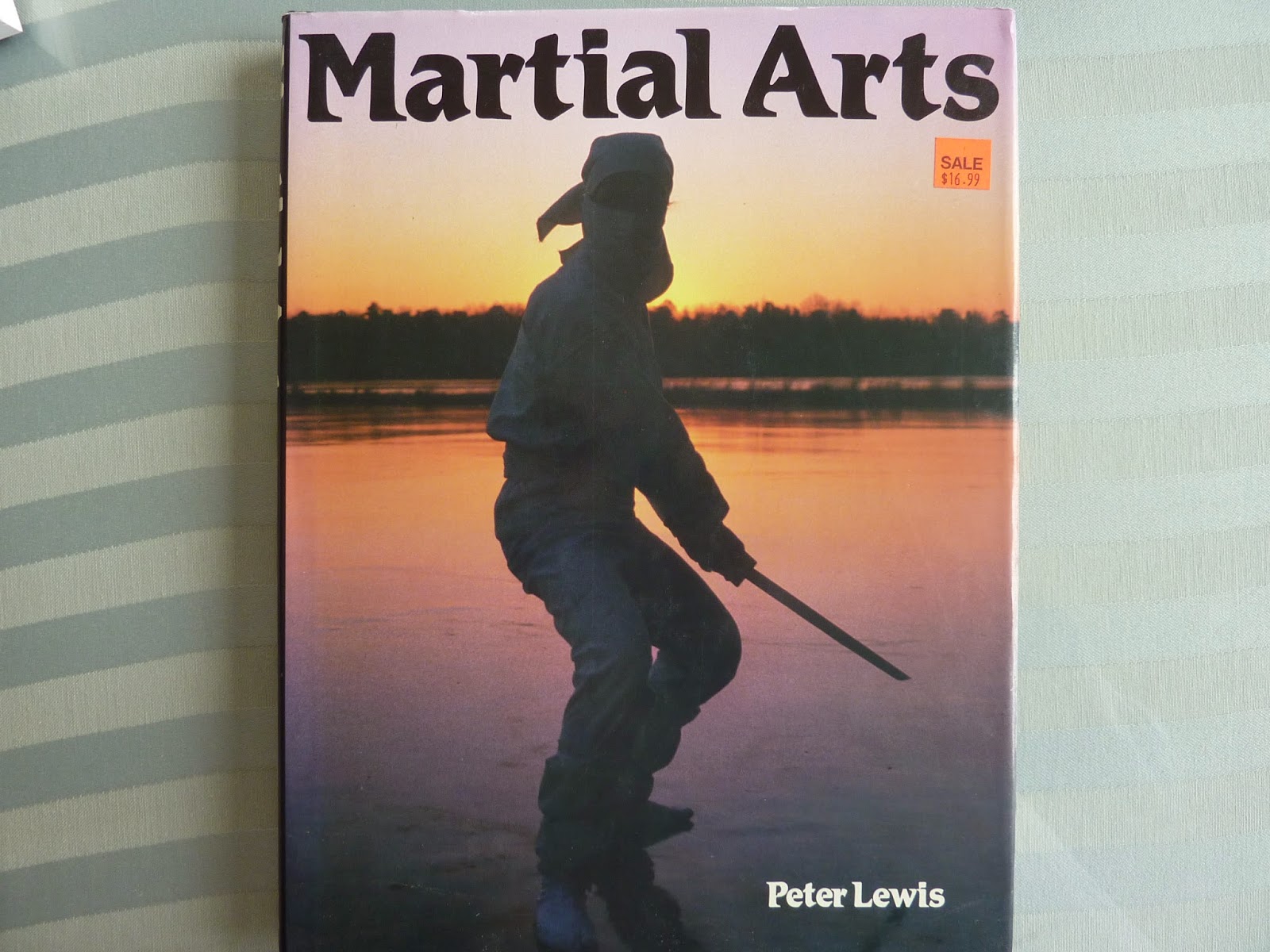原庒正貨 與 A貨: 王薌齋意拳(大成拳)與澤井健一"太成拳",唐人唐手與日本"空手"道,你要學那一門? 請認明正貨!
學武初手 須知 :
你,特別是80後的武學新進,要知到現代日本空手道
 Japanese Karate 不是'正宗日本出品',只是 'A貨',原庒正貨直至第二次世界大戰前,一向是叫做 "唐手" ,直到現在英文也都是叫做 Karate !
Japanese Karate 不是'正宗日本出品',只是 'A貨',原庒正貨直至第二次世界大戰前,一向是叫做 "唐手" ,直到現在英文也都是叫做 Karate ! 確切來說,"唐手" 應該是指少林拳法及南拳之中的 鶴拳 一個流派叫"食鶴拳"@@。在當時十九世紀初葉從福建省福州傳入琉球 (沖繩)群島。洪武五年 (1372) 明特使訪問琉球三王中最強之首,邀約建立蕃屬關係,又在1393年前後, 正式移植 36 個華人家庭於那霸(Naha)。於1507 年 琉球蕃王 King Sho Shin 首先禁止島民攜帶武器,其後日本薩摩家族 Satsuma Clan 於1608年成功佔有琉球,嚴禁本土人士,包括衙差保安等,攜帶利刀利劍武器, 以防作亂。而中國拳法對琉球本土地下武術發展,發揮極大影響力,這是有確鑿歷史根據,絶對是有跡可尋,歷史就是歷史,不容日本人不認賬。
(有興趣的話,請看 The sections on 'History of Karate-do from the Meiji Era', 'Japanization of Karate' etc. from the epic publication "The Bible of Karate: BUBISHI" 武備誌 translated and commentary by Patrick McCarthy, one of Japan's most senior-ranked foreign karate and kobudo 古武道 teachers (then in 1995). (Chinese names have been inserted by this blogger after consulting relevant Chinese sources; may not be entirely accurate.)
此 '武備誌' 由明朝 芧元儀 於十七世紀所作,共240篇, 其中也錄有 戚繼光 1561年所著 "紀效新書"中18篇有關"32勢長拳"。Mao Yuanyi's "Bushido" is "a document peculiar to Monk Fist 少林羅漢拳 and White Crane 白鶴拳 gongfu.")
@@ 白鶴派由福建永春 方七娘 所傳授, 鶴拳正宗是白鶴拳,分為:1. 宗鶴 (宿鶴) Suhe Quan, Sleeping Crane. 2. 鳴鶴 Minghe, Whooping Crane. 3. 飛鶴 Feihe, Flying Crane. 4. 食鶴 (朝鶴, 痹鶴) Shihe, Feeding Crane. 5. 蹤鶴 Zonghe, Jumping Crane. 6. 睡鶴 Sleeping Crane.
方七娘 何許人也?
"In his 1983 book 'Hakutsuru Mon: Shokutsuru Ken', (White Crane Gate: Feeding Crane Style) 白鶴門食鶴拳, Master Liu Yinshan 劉銀山 師傅 wrote that the Shaolin Temple was a sanctuary for resistance fighters during the early Qing dynasty. ... government soldiers burned the monastery down in 1674. Among the monks who fled the monastery in Henan Province was Fang Zhonggong 方種公 (Fang Huisi方慧石), a master of 18 Monk Fist Boxing
--18 羅漢拳."
種公碾轉逃亡至福建永春,後為方七娘 生父,傳授武功及'武備誌' 秘笈。... Fang Qiniang developed the White Crane style in the early 18th century. ... "many of these gongfu styles are believed to have been later introduced to and cultivated in Okinawa. Miyagi Chojun, a direct disciple of Higashionna Kanryo (1853-1917), told us in his 1934 Outline of Karate-do that 'a style' of gongfu was brought from Fuzhou to Okinawa in 1828 and served as the source of Goju-ryu karate kempo." 剛柔流拳法。 ...
此外,有歷史文獻記載:
'Chinese Influences on the Development of Karate-do':
1. In 1393, a Chinese mission, now known as the "36 Families", was established in Naha 那霸, leading city and capital of Okinawa. Young Okinawans learned to read and write Chinese in Kume village. Those who did well went on Chinese government scholarships to study at the Chinese capital. Chinese fighting arts were most likely also transmitted to Okinawa then.
2. Kusankun, popularly known among karate historians as Kusanku or Koshankun 公相君, an expert in kempo (or quanfa) 拳法, travelled with a few personal disciples to the Ryukyu Kingdom with the Qing Sapposhi (Chinese envoy) Quan Kui 清朝 冊封使 全魁 in 1756. Koshankun's awesome demonstration of his martial prowess was duly recorded in an official Okinawan chronicle entitled the Oshima Incident (Oshima Hikki). "Oral tradition maintains that Kusankun was one of the teachers of the great Okinawan master Sakugawa Chikudun Pechin." The latter's nickname was "Toudi" Sakugawa, "Tou-di" is Okinawan for the original Chinese characters "kara-te" (in Japanese): 唐手!
3. "During Okinawa's tributary alliance with the Middle Kingdom, contingents of Uchinanchu ryugakusei (exchange students) 琉球留華學生 made extended pilgrimage to various parts of China to receive an education. ... Like the (Japanese) kentoshi, it is likely that these ryugakusei learned the Chinese fighting arts and brought them back to their homeland as well."
4. Some Okinawan pechins (somewhat comparable to samurais) studied martial arts in both Fujian, especially at Ryuru Ko's Kojo dojo 如如哥, the nickname of White Crane Master Xie Zhongxiang (1852-1930) 謝崇祥 at Fuzhou, and Satsuma. "Bushi" Matsumura was one such master. He came to be known as the 'Miyamoto Musashi of the Ryukyu Kingdom'. Funakoshi Gichin (1869-1957), the "father of modern karate", was one of his disciples. And "a significant portion of Karate-do Kyohan by F. Gichin is taken directly from the Bubishi"!
A class of black-belt Shotokan karatekas advancing from one end of the dojo to the other. (Photo from "Shoto-kan Karate" by Peter Ventresca, pages 26 & 27.)
"去中國化": 由"唐手" 變臉為"空手"道
In the 1920's and 30's when Ryukyu kempo karate-jutsu was being introduced to the Japanese mainland, Japanese nationalism, militarism and anti-Chinese sentiments were rapidly on the rise... 在二十至三十年代 ,日本民族主義,軍國主義及反華情緒高漲, "唐手" 代表"中國徒手搏擊武術",這名詞當然不可能被公認!"Hanashiro Chomo, a direct disciple of 'Bushi' Matsumura, made the first recorded use of an ideogram to replace the 'China' (唐) ideogram in his 1905 publication Karate Kumite." "The new character (空) for kara meant 'empty' and can also be pronounced 'ku' (empty) or 'sora' (sky). As such, kara not only represented the physical but also embraced the metaphysical..." (vide page 56 of P. McCarthy's "Bubishi".) Hence, the modern term "karate" now literally means "the way of the Empty Hand" "空手道".
琉球本土民間地下武術的承傳,對日本傳統武術發展 feudal bujutsu,也有深遠影響,例如農夫用的生產工具,如長棍 staff, 棒 jo : 3- or 4-foot staff,鐮刀 kama: sickle or pick,tonfa 拐, 雙節棍 nunchaku: rice flail,
和漁民用的木槳 eiku: boat oar 等 ,都是忍者 ninja 的隨手致命武器,部份也成為現代某些空手道流派所習練之"武器"。The following pictures are culled from "Secrets of the Samurai" by Oscar Ratti and Adele Westbrook, pages 306-7, page 321.

 2 Nunchakus (-- the miniature one is my 9-yr old grand daughter's handicraft.)
2 Nunchakus (-- the miniature one is my 9-yr old grand daughter's handicraft.)
 A jo against two swords.
A jo against two swords.

即學即用 ,孤軍作戰式的 :[絕境求生自衛術!]--
"Life-o-Death Self-Defense 4 Dummies !"























